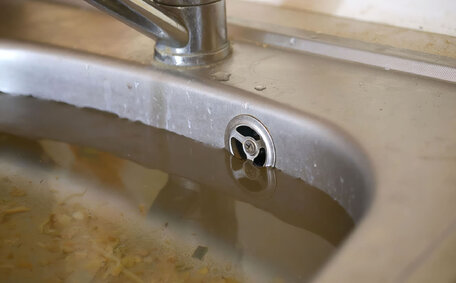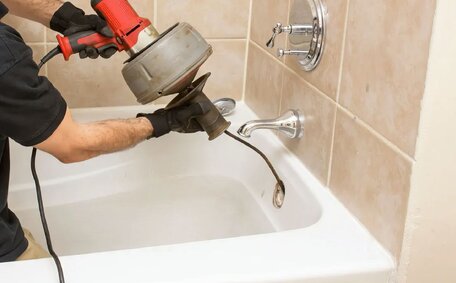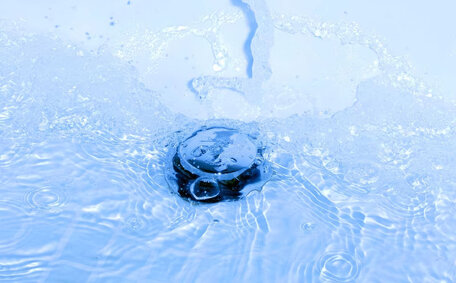Introduction: Using Bleach to Unclog Drains - The Debate
The efficacy of bleach for unclogging drains is widely debated. Some individuals are of the opinion that pouring bleach down the drain can dissolve blockages and restore water flow. Nevertheless, professionals advise against pouring bleach into your pipes due to risks of damage and septic system impairment.
In this article, This article analyses bleach’s effectiveness and safety for unclogging drains. We will discuss various methods for unclogging drains, reasons for using bleach, provide a clear guide for its use, and outline safer alternatives. We’ll also overview key precautions to take when tackling a clogged drain.
Although bleach can clear certain blockages, it is crucial to understand the associated hazards. We’ll analyse these trade-offs so you can use this information to make an informed decision about bleaching drains in your home.
Does Bleach Actually Unclog Drains? Understanding the Chemical Reaction
While bleach can dissolve clogs, it presents significant risks. The primary reaction when bleach is employed to clear shower drains or similar obstructions involves breaking up soap scum and other debris.
Chlorine bleach decomposes into chlorine molecules and oxygen when combined with water, which is effective for dissolving sodium hypochlorite. The released chlorine serves as a potent oxidizing agent that decomposes soap scum, hair, and other debris, with water aiding this chemical process.
The ability to break down obstructions is why homeowners find success using bleach for issues like a clog down kitchen sink. Nevertheless, chlorine can cause metal pipes and rubber gaskets to weaken, potentially instigating a drain clog or leaks and burst pipes over time. There is also a risk involved in mixing bleach with other cleaning chemicals, which can create toxic chlorine gas.
In conclusion, bleach-based strategies rely on chemical reactions to dissolve organic blockages. However, when facing clogs and risks such as pipe deterioration, experts commonly recommend safer alternative drain maintenance strategies. We’ll examine safer alternatives for unclogging drains that could eliminate the need for bleach.
Step-by-Step Instructions for Unclogging a Drain with Bleach
If you opt to use bleach for a blockage, follow these crucial safety steps:
- Wear protective gear like rubber gloves, goggles, and a face mask or respirator.
- Work in a well-ventilated space to mitigate the risks of bleach fumes and chemical reactions.
- For stubborn clogs that impede your drains, attempt pouring hot water down drain from a boiled pot initially to loosen blockages, ensuring a clear flow.
- Mix one to two cups of liquid bleach with hot water as an attempt to effectively unclog your shower drain. Stir gently.
- Remove the drain cover and diligently funnel the bleach solution into the drain.
- Allow the bleach solution to sit for up to 15 minutes, giving it time to break down the blockage effectively.
- Afterwards, flush the drain with plenty of hot water to ensure it is thoroughly cleansed.
- Repeat steps 4-7 if water still won’t drain. Do not exceed three treatments with bleach.
- Use the baking soda vinegar solution instead of more bleach if the clog persists.
- Call a professional plumber if you’ve used bleach multiple times with no success.
Consider adopting safer drain solutions to clean your drains before resorting to bleach.
Safety Precautions When Using Bleach on Drains
Taking safety measures is crucial when using bleach in your garbage disposal to avoid health risks or pipe damage:
- Don protective gear such as rubber gloves, goggles, and a respiratory mask to prevent skin, eye, and lung irritation when dispensing bleach down your drain.
- Ensure proper ventilation by opening windows, and pour cup of diluted bleach carefully to prevent creating toxic chlorine gas.
- Gently pour the bleach to minimise splashing and ensure it is not combined with any other cleaners.
- Do not use more than one or two cups of bleach per treatment, and always dilute the bleach with hot water prior to application.
- After applying hot water, rinse pipes with cold water to ensure no residual bleach remains.
- Closely inspect your metal or plastic pipes after using bleach, as corrosion can harm your septic system and potentially lead to leaks.
- Seek assistance from a licensed plumber promptly if you notice septic system complications following drain bleaching.
While bleach can technically unclog your pipes clogged by organics, safety must come first. Consider trying safer home remedies as drain cleaners before turning to caustic bleach solutions for unclogging toilets.
Alternatives to Bleach for Unclogging Drains
Rather than using harsh bleach, consider these safer drain cleaner methods to unclog drains in your bathroom:
Baking Soda and Vinegar
A baking soda and vinegar mixture can effectively dislodge pipe blockages. The chemical reaction will help break up grease, hair, and other gunk. Follow with 2 litres boiling water.
Plunger
A sturdy sink plunger can quickly dislodge substantial clogs in your bathroom sink drain. Plunge forcefully 10-15 times to loosen the blockage at the drain opening.
Drain Snake/Auger
Deploy a wire hanger or a long, coiled metal snake to clean out hair, debris, and other dense blockages through your pipes.
Enzymatic Drain Cleaners
A concoction of hot water and dish soap can be a non-corrosive option for breaking down organics. Specially formulated products with 'active enzymes’ help breakdown substances like grease and paper within your water bowl.
But for severe clogs, like a clogged toilet or when you need to unclog bathtub drains, bleach may still warrant careful usage as a last resort if above options fail. Make sure to take safety precautions like ventilation, gloves and goggles when handling bleach.
When to Call a Professional Plumber for Drain Issues
If DIY methods have failed to clear your blocked drain, it’s crucial to call a professional plumber to prevent further issues. It’s time to call Hornsby Plumbing when you notice these signs:
- Standing water backing up from multiple drains or overflowing into your sink/tubs
- Strong sewer gas odours coming from drains
- Visible cracks or leaks in pipes allowing water to escape and leading to reoccurring drain clogs
- Frequent clogs reappearing after attempts to clear them
- Gurgling drains or draining very slowly despite treatments
- Plumbing situated in the challenging-to-reach zones within our house
Our licenced plumbers possess advanced gear, including industrial drain snakes and hydro-jetters, to tackle blocked drains that are resistant to bleach. We inspect pipes for damage, provide fixture repairs, and ensure proper drainage function is restored.
To discover more about a prompt appointment that’ll leave you very happy, or to discuss our expert plumbing services, contact Hornsby Plumbing 24/7:
Phone: 1300 349 338
Email: [email protected]
Conclusion and Summary - Should You Use Bleach?
In summary, using bleach to unclog drains can be effective in dissolving hair, grease, and other organic material. Bleach’s chlorine content is capable of breaking down substances in kitchen and bathroom sinks. However, there are also safety risks to consider before pouring bleach, including corrosion of metal pipes and accidental mixing with other chemicals to create toxic gases.
We recommend trying safer methods first like a plunger, drain snake, baking soda/vinegar, or enzyme drain cleaners. For persistent clogs after other methods fail, cautiously use bleach while adhering to these precautions:
- Wear gloves and goggles, and ensure proper ventilation
- Diluting bleach before use and limiting to 1-2 cups per treatment
- Rinse the pipes completely to remove any remaining bleach
- Monitor the pipes for any signs of corrosion afterwards
However, if you’ve attempted every DIY drain treatment with no success, a professional plumber has the high-powered drain cleaning equipment to tackle even the toughest clogs bleach can’t handle.
For immediate help in clearing your plumbing of clogs, reach out to Hornsby Plumbing’s licensed professionals today. With 24/7 availability, we inspect drain pipes, utilise industrial snakes or hydro-jetters to extract stubborn blockages, and ensure proper drainage function is fully restored throughout your home’s plumbing.
Phone: 1300 349 338
Email: [email protected]






